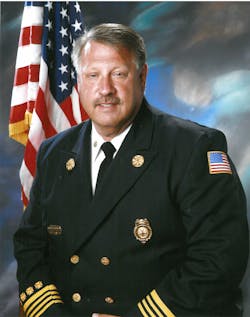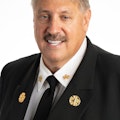It looks like leadership at the federal level is finally starting to realize what we at the street level have known for many years: There is an opiate epidemic in America. How many calls have you gone on where someone died from a heroin overdose? How many times have you walked into a home and found someone laying on the floor, unconscious and not breathing, with the needle still sticking out of their arm? How much Naloxone have you administered in the last couple of years?
The first clue about the severity of the issue came when we started allowing police officers and others to administer nasal Naloxone, which blocks or reverses the effects of an opioid. But we heard from no one at the federal level about addressing the problem until now.
Pain problems
In mid-November, Surgeon General Dr. Vivek Murthy released an approximately 400-page report called “Facing Addiction in America,” part of an awareness campaign called TurnTheTide. The report details the problems associated with addiction to drugs and alcohol. Highlighted in the report is the opiate epidemic. The report indicates that 78 people die from opiate overdoses every day. That is more than car accidents and firearms combined.
And opiate addiction is not limited to the street junkie. It’s affecting cities, middle-class suburbia and the rural areas alike. The rich and famous are not exceptions, as many high-profile celebrities have been reported to be addicted to opiates.
The problem is clear: Part of the reimbursement that hospitals receive these days is based on patient satisfaction surveys. If you are experiencing any type of pain, they do not hesitate to give you pain medicine, and when you leave, you usually get a prescription for pain meds.
I have experienced this with my personal doctor on several occasions. For example, I recently went to the doctor because I suspected I had a kidney infection. I just needed some antibiotics. Not only did the doctor give me the antibiotics, but he also offered me pain medicine. I declined. Some Tylenol would do me just fine for a couple of days. My doctor has offered them to me before for various aliments, and I have always turned them down when I felt they were unnecessary.
Many who are using heroin follow a path. Their doctor prescribes some painkillers. They get hooked. Their prescription runs out. They start buying pills off the street, and when that becomes too expensive, they start buying heroin from a drug dealer. Many find heroin easier to get, less expensive and more potent than painkillers. (Both heroin and opioid pills are derived from the poppy plant, and their chemical structures and effects—increase in pain tolerance, sense of euphoria—are similar.)
Chuck Rosenberg, the acting administrator for the Drug Enforcement Administration (DEA), confirmed this in an interview when he said, “We know that 4 out of 5 new heroin users started on prescription pills. And most of the people who started on prescription pills get them out of someone’s medicine cabinet … So there’s a pill problem that becomes a heroin and opioid problem.”
The impact on EMS has been dramatic as the number of opiate overdoses continues to rise. Sometimes bad heroin gets released on the streets, taxing EMS systems. Earlier this summer, Huntington, WV, saw the effects of a bad batch of heroin hitting the streets when the EMS system responded to 26 heroin overdoses in the matter of four hours. At times, there were no ambulances available to respond to calls because of the surge.
Although the federal government is starting to address the issue, I do not expect it to go away anytime soon. The Surgeon General’s TurnTheTide campaign is mainly designed around raising awareness. Murthy plans on sending letters to 2.3 million healthcare providers—including doctors, dentists and nurses—encouraging them to address the epidemic while still treating their patient’s pain appropriately.
EMS takeaways
In the meantime, remember that Naloxone is a miracle drug and can immediately reverse the effects. Administering Naloxone nasally is easier and faster than going through the process of starting an IV. But don’t forget your basic skills, and make sure you maintain the airway until you can administer the dosage. Finally, make sure you transport all these patients to the hospital regardless of how well they recover after you administer the Naloxone.
The opiate epidemic is not anything new and I do not expect it to go away anytime soon. Stay vigilant and stay safe!
About the Author
Gary Ludwig
GARY LUDWIG has served in three fire departments over his career: St. Louis, Memphis, and Champaign, IL. His fire, EMS and rescue career spanned a total of 46 years, and he has been a paramedic for over 44 years. Ludwig served as president of the International Association of Fire Chiefs in 2019-20. He has a Master’s degree in Business and Management, has written over 500 articles for professional fire and EMS publications and is the author of seven books.
Connect with Gary
Email: [email protected]
Facebook: Gary Ludwig
Twitter: @ChiefGaryLudwig
Website: garyludwig.com

